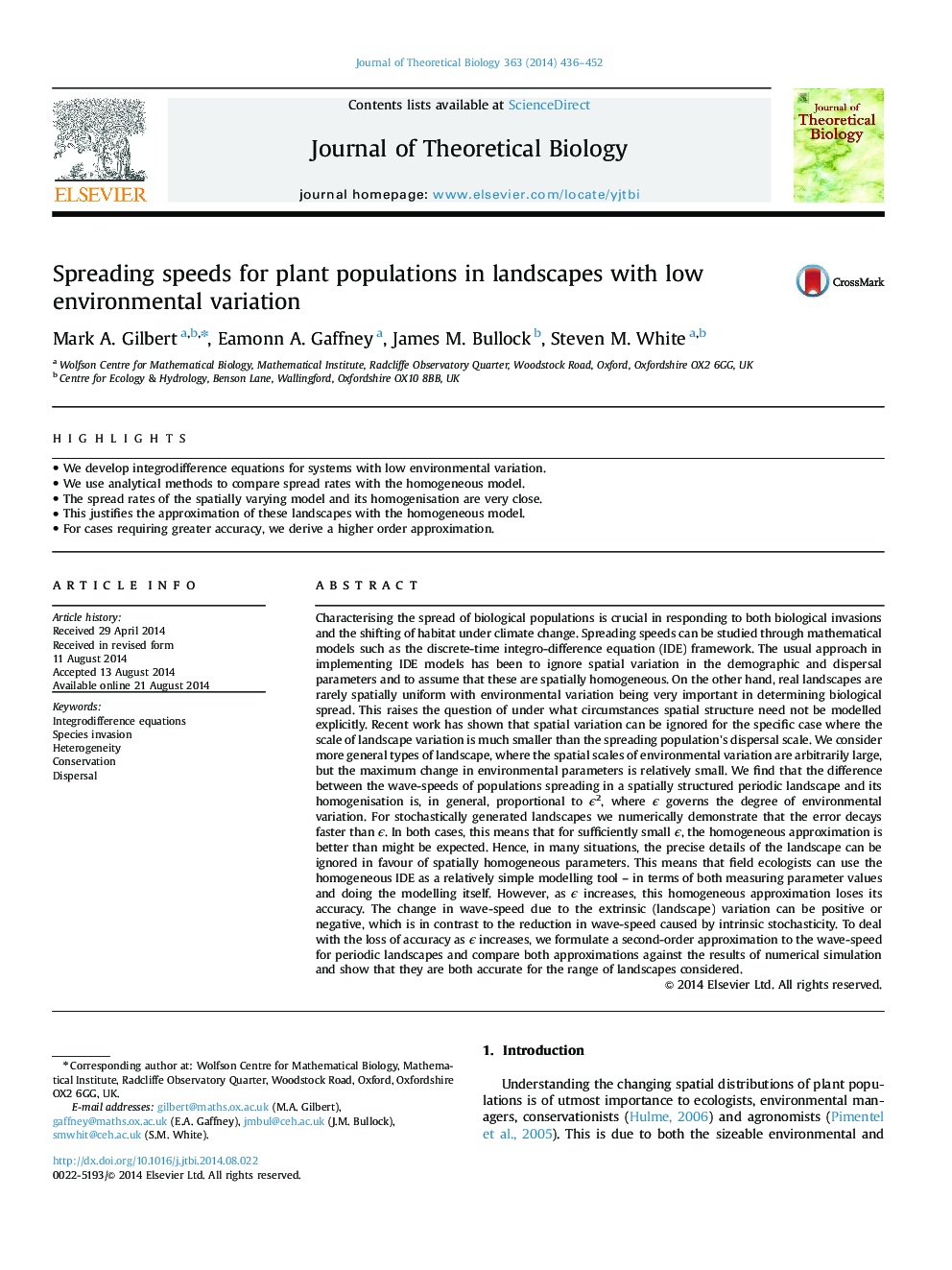| کد مقاله | کد نشریه | سال انتشار | مقاله انگلیسی | نسخه تمام متن |
|---|---|---|---|---|
| 6370264 | 1623847 | 2014 | 17 صفحه PDF | دانلود رایگان |
عنوان انگلیسی مقاله ISI
Spreading speeds for plant populations in landscapes with low environmental variation
ترجمه فارسی عنوان
سرعت پخش برای جمعیت های گیاهی در مناظر با تنوع زیست محیطی کم
دانلود مقاله + سفارش ترجمه
دانلود مقاله ISI انگلیسی
رایگان برای ایرانیان
کلمات کلیدی
معادلات انحراف معیار، تهاجم گونه، ناهمگونی، حفاظت، پراکندگی،
موضوعات مرتبط
علوم زیستی و بیوفناوری
علوم کشاورزی و بیولوژیک
علوم کشاورزی و بیولوژیک (عمومی)
چکیده انگلیسی
Characterising the spread of biological populations is crucial in responding to both biological invasions and the shifting of habitat under climate change. Spreading speeds can be studied through mathematical models such as the discrete-time integro-difference equation (IDE) framework. The usual approach in implementing IDE models has been to ignore spatial variation in the demographic and dispersal parameters and to assume that these are spatially homogeneous. On the other hand, real landscapes are rarely spatially uniform with environmental variation being very important in determining biological spread. This raises the question of under what circumstances spatial structure need not be modelled explicitly. Recent work has shown that spatial variation can be ignored for the specific case where the scale of landscape variation is much smaller than the spreading population׳s dispersal scale. We consider more general types of landscape, where the spatial scales of environmental variation are arbitrarily large, but the maximum change in environmental parameters is relatively small. We find that the difference between the wave-speeds of populations spreading in a spatially structured periodic landscape and its homogenisation is, in general, proportional to ϵ2, where ϵ governs the degree of environmental variation. For stochastically generated landscapes we numerically demonstrate that the error decays faster than ϵ. In both cases, this means that for sufficiently small ϵ, the homogeneous approximation is better than might be expected. Hence, in many situations, the precise details of the landscape can be ignored in favour of spatially homogeneous parameters. This means that field ecologists can use the homogeneous IDE as a relatively simple modelling tool - in terms of both measuring parameter values and doing the modelling itself. However, as ϵ increases, this homogeneous approximation loses its accuracy. The change in wave-speed due to the extrinsic (landscape) variation can be positive or negative, which is in contrast to the reduction in wave-speed caused by intrinsic stochasticity. To deal with the loss of accuracy as ϵ increases, we formulate a second-order approximation to the wave-speed for periodic landscapes and compare both approximations against the results of numerical simulation and show that they are both accurate for the range of landscapes considered.
ناشر
Database: Elsevier - ScienceDirect (ساینس دایرکت)
Journal: Journal of Theoretical Biology - Volume 363, 21 December 2014, Pages 436-452
Journal: Journal of Theoretical Biology - Volume 363, 21 December 2014, Pages 436-452
نویسندگان
Mark A. Gilbert, Eamonn A. Gaffney, James M. Bullock, Steven M. White,
